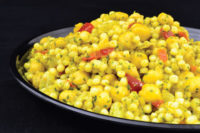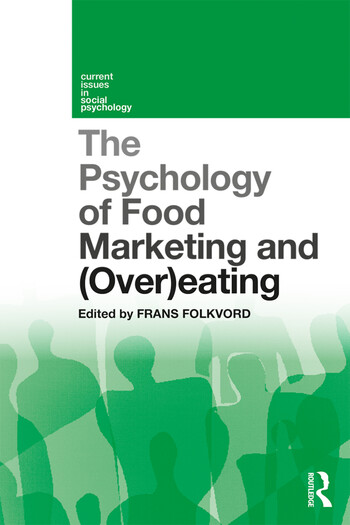SPIRIT OF INNOVATION AWARDS | 2012 RETAIL WINNERS
2012 Innovation Awards - Retail




Tofutti Brands / Hooray Hooray Bars
Whether it’s because they’re battling a health condition, such as diabetes, or simply watching their weight, consumers are looking to avoid sugar. Meanwhile, certain sweetener alternatives have fallen out of public favor (justifiably so, or not). Concurrently, a growing segment of the consumer market is looking to avoid dairy, whether that’s due to allergy issues or, likewise, an attempt at weight management.
| “There are many people who cannot eat sugar due to various health issues, such as diabetes,” explains David Mintz, Tofutti founder and CEO. “Hooray Hooray Bars provide them [with] a non-dairy, sugar-free option without the use of artificial sweeteners..." |
For its take on a frozen, ice cream-like treat, Tofutti Brands attempted to cater to both of these demands: dairy- and sugar-free. In so doing, developers turned to a natural sweetener, one that would open new possibilities at the company.
“There are many people who cannot eat sugar due to various health issues, such as diabetes,” explains David Mintz, Tofutti founder and CEO. “Hooray Hooray Bars provide them [with] a non-dairy, sugar-free option without the use of artificial sweeteners. Hooray Hooray Bars are made with stevia, a natural sweetener widely accepted in the natural foods industry. No other commercial ice cream currently uses stevia.” (Editor’s note: at the time of launch.)
Although formulating with artificial sweeteners can be challenging, Mintz says the stevia-based variety in Hooray Hooray Bars proved less difficult than expected.
“Using any sugar-replacement presents a unique challenge: make something sweet, but without the unpleasant aftertaste of artificial sweeteners,” he relates. “Stevia made Hooray Hooray Bars sweet and pleasant all the way through.”
“The finished product took roughly a year to create and was the result of hard work by our research and development team,” adds Mintz. “As with any new product, Hooray Hooray Bars went through numerous stages of development, until we felt we had a product that delivered what we wanted and would satisfy its intended target market.”
The result is a frozen dessert suitable for diabetics and those who are lactose-intolerant; plus, it satisfies the concerns of consumers looking for vegan, kosher, heart-healthy, and calorie- and health-conscious items, as well. The vanilla bars are dipped in a dark chocolate coating with crisp brown rice “crunchies.” Package claims include “No Added Sugar” and “Sweetened with Natural Stevia.” In fact, Hooray Hooray Bar packaging has a stevia logo uniquely designed for Tofutti.
As Tofutti’s Mintz explains, “Our hope is consumers mentally link this one-of-a-kind stevia logo with Tofutti products.” Officials say ease of formulation with this alternative sweetener actually has led to plans for more applications at Tofutti Brands.
“Hooray Hooray Bars were launched about a year ago, and we are currently researching ways potentially to reformulate our existing frozen dessert products with stevia and develop new products, as well,” says Mintz. “Everyone has the ability to invent; you just have to put your mind to it. If you have the will and the persistence, you will find success. But, you need the desire, the faith that you will, and you will.”
2nd Place – Retail:
Pinnacle Foods Group / Mrs. Paul’s and Van de Kamp’s ParchmentBake
Consumers have long been skittish about preparing fish at home. Whether it’s due to a lack of familiarity with preparation methods or simply a dislike of the protein, grocery shoppers tend to stick to fish sticks, fried fillets and sandwich patties.
With its popular Mrs. Paul’s and Van de Kamp’s frozen seafood lines, Pinnacle Foods Group already has a sizeable business with those applications. So, when Pinnacle decided to expand its seafood line, officials turned to names consumers already would know and trust.
Debuting under each brand, new ParchmentBake tilapia fillets are Pinnacle’s first foray into lightly sauced, grilled seafood. Officials say their research found consumers would like to eat more fish, but they are uncomfortable preparing fish at home. ParchmentBake removes the guesswork: A consumer opens the outer packaging and removes the parchment pouch containing the fish and seasonings. Then, they simply place this parchment pouch in the oven for 20-25 minutes. The parchment keeps the fish flavorful and moist, and it makes for simple cleanup when dinner is complete.
Not surprisingly, officials say this product development required coordination from marketing, manufacturing, R&D and sales. Likewise, the entire project needed consumer insights about shoppers’ preferred seafood varieties and flavors. Manufacturing and packaging had to work together to deliver a pouch that would deliver the flavor and retain moistness in the fish.
“The ParchmentBake launch was truly a cross-functional effort for the Pinnacle Foods seafood team,” says Colleen Kuhn, associate brand manager, seafood. Product research determined the variety of fish and the flavors consumers want to find on store shelves, and the company’s manufacturing and packaging divisions worked together to identify the manufacturing process and develop the parchment pouch. R&D then infused flavor and moistness into the fillets, before testing and trial to deliver a consistent, convenient product.
3rd Place – Retail:
Tyson Foods / Tyson Deli Market
In a challenging economy, consumers balance desires for convenience and speed—with the need to balance the checkbook. How does that dynamic affect food spending? According to Tyson Foods, restaurant visits are down, and more consumers are turning to the deli for convenient meal solutions.
Tyson says it faced a two-fold challenge: expand its product offerings and take advantage of new data from NPD Deli Track. These insights suggest that refrigerated products sold from the deli self-service case often are purchased for later consumption, not immediate usage.
Officials say its new Tyson Deli Market line provides a range of meal options, including entrees, meal components and side dishes (many suitable as entrees in and of themselves). Interestingly, gone are many of the familiar packaging elements at the heart of Tyson’s well-known products. Instead, Tyson uses a clear plastic film (which allows consumers to more easily see the food), along with modified atmosphere packaging, vacuum skin packaging technology and a cardboard outer sleeve to bear branding and nutritional information.
Tyson’s Lisa Welton, associate product manager, says the simple labeling is intended to mimic “hand-written labels on deli sandwich paper. Even the presentation of the Tyson brand has been altered, positioning the product in the deli with associations of a corner market or farmer’s market.”
The entire presentation minimizes any suggestion that this is a highly processed food. Tyson ships the product frozen and offers a 10-day shelflife after it’s slacked out. Tyson says the product’s ease of handling provides a deli-quality experience without the need for retailer training.
Welton says the new product line demanded the involvement of a wide range of disciplines from throughout Tyson. In addition, the diverse line demanded that planners integrate multiple proteins and starches—coming from a variety of production locations—into one production stream. These capabilities reflect Tyson’s strengths in breadth of offerings and culinary resources, says Welton.
Looking for a reprint of this article?
From high-res PDFs to custom plaques, order your copy today!









